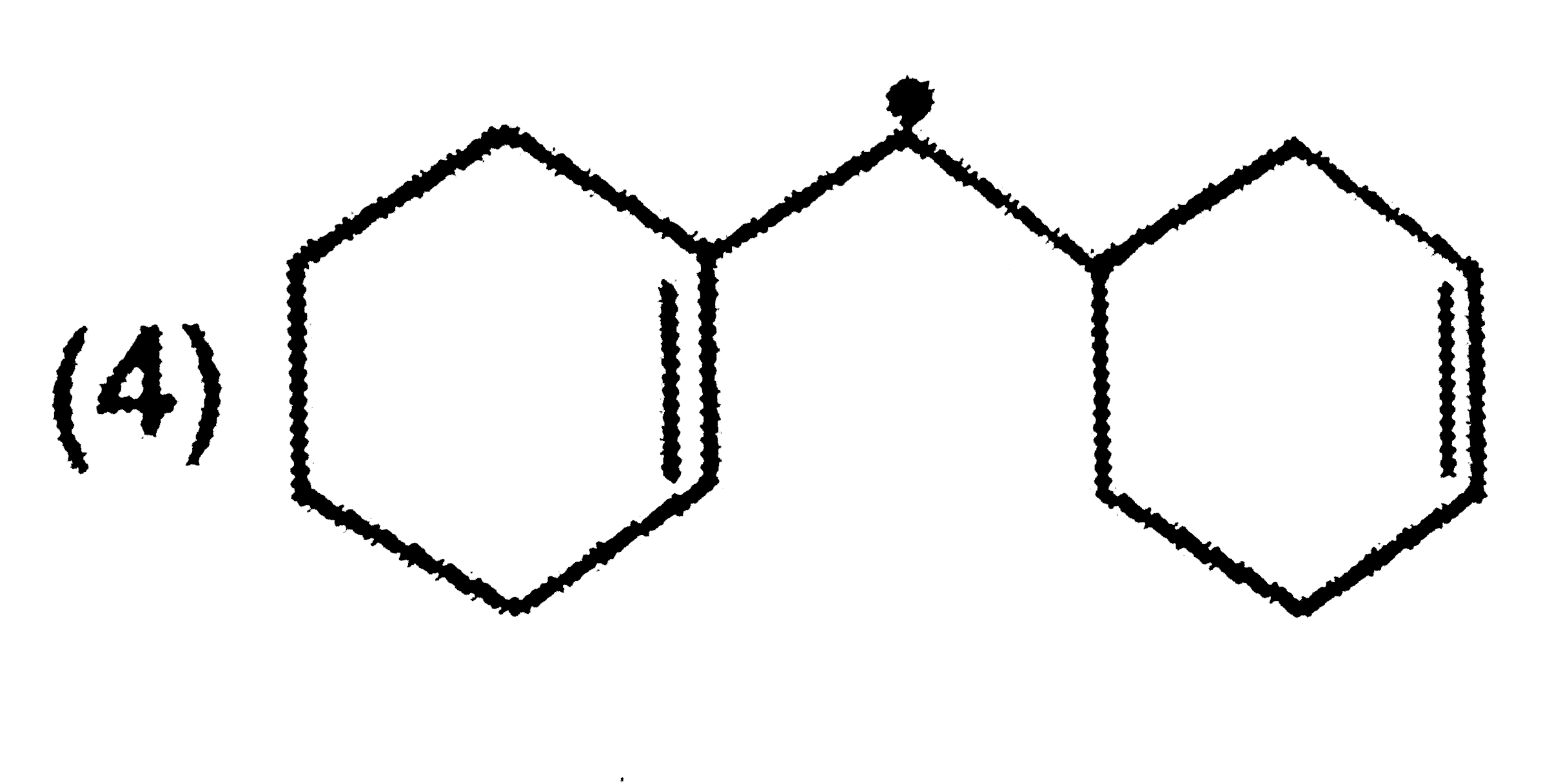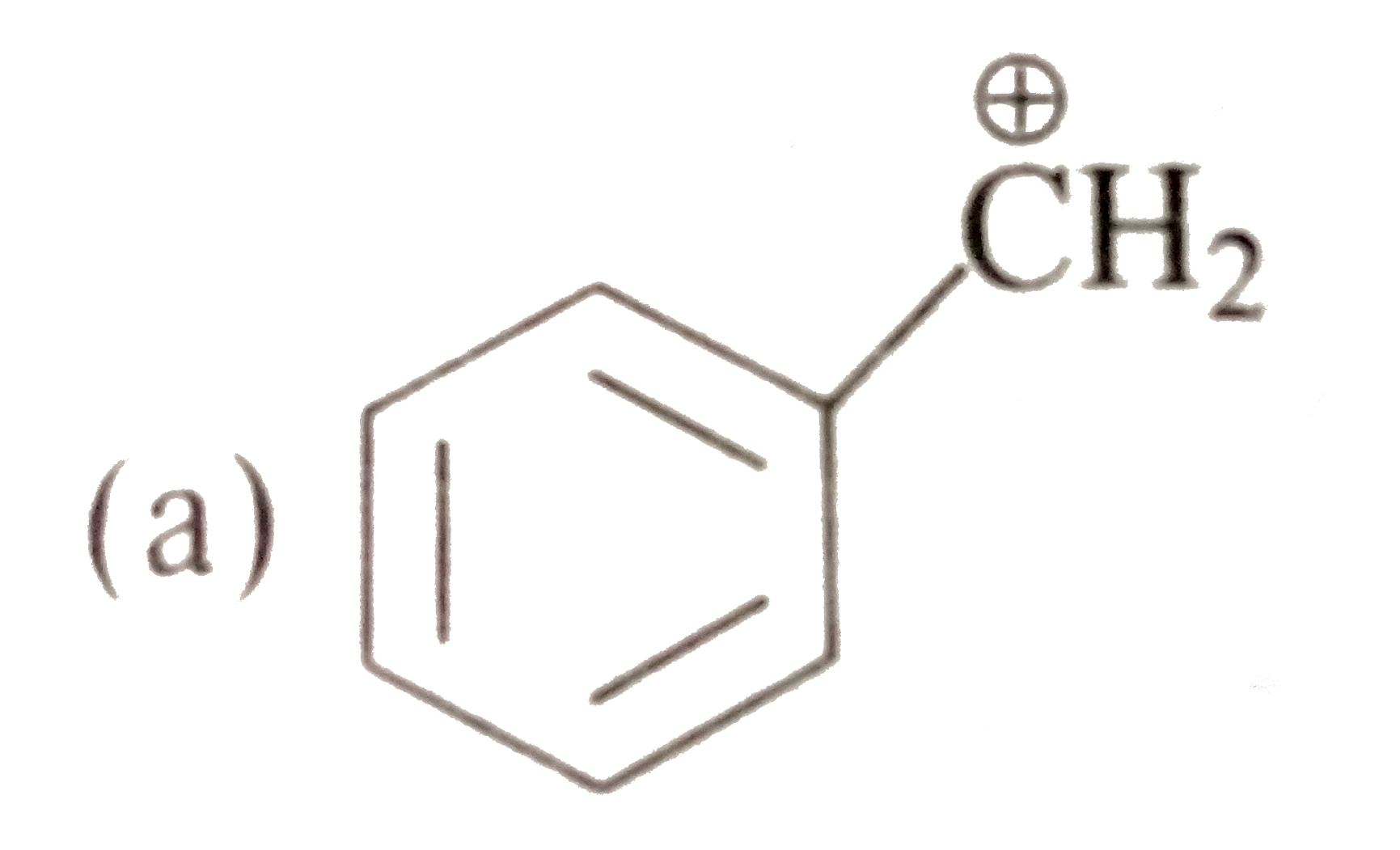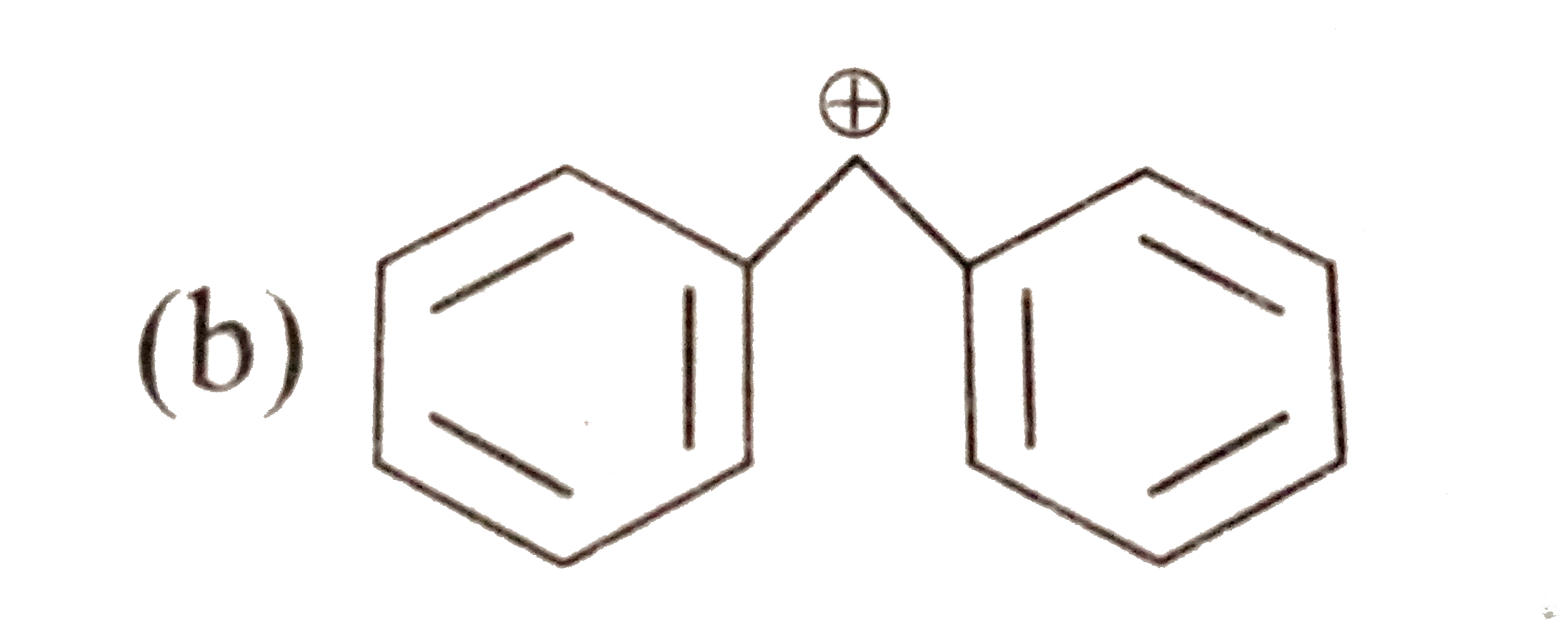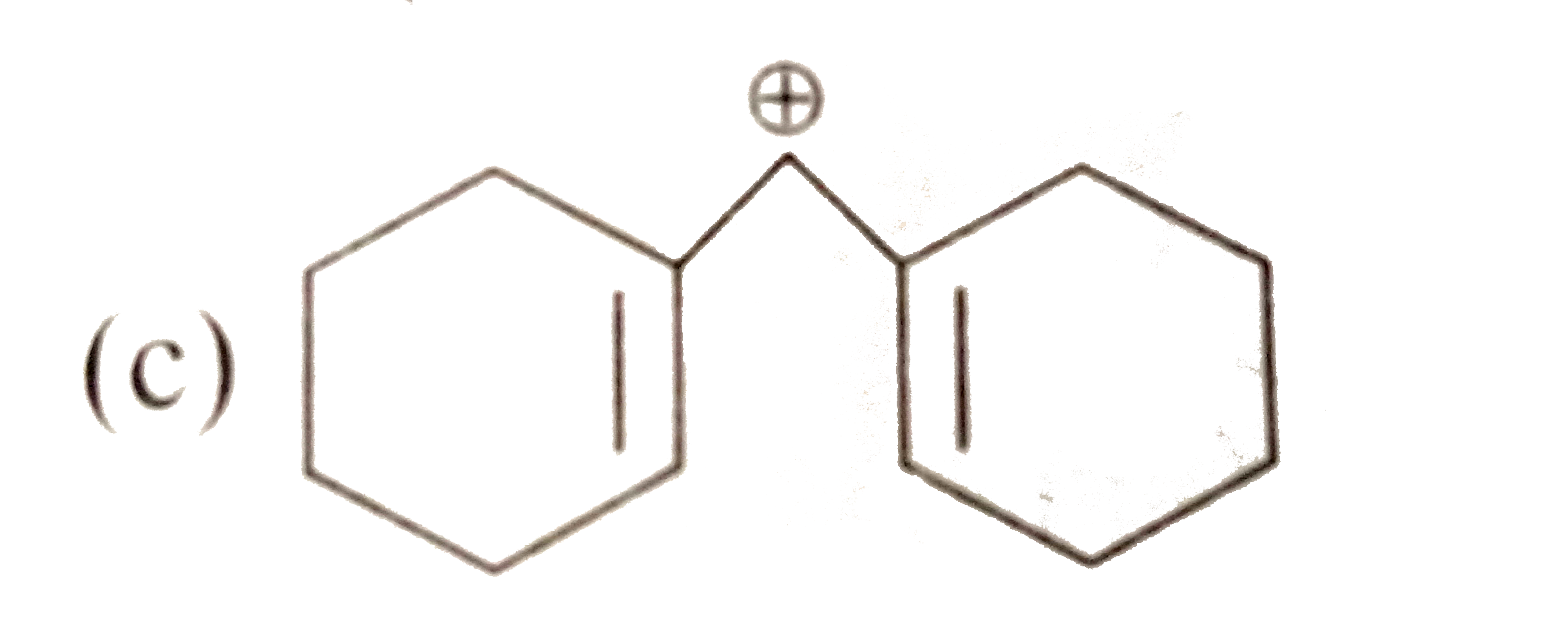Hyperconjugation is more pronounced in
2 - methylpropene
but -2-ene
2,3 -dimethylbut - 2- ene
2- methylbut -2-ene
The correct Answer is:c
To determine where hyperconjugation is more pronounced, we need to analyze the number of alpha-hydrogens in the given options. Hyperconjugation is a stabilizing interaction that results from the overlap of a σ-bond orbital with an adjacent empty or partially filled p-orbital or π-orbital. The more alpha-hydrogens present, the greater the hyperconjugation effect.
1. Understanding Hyperconjugation:
- Hyperconjugation occurs when there are adjacent carbon atoms with hydrogen atoms (alpha-hydrogens) that can interact with a double bond or a positively charged carbon atom.
- The more alpha-hydrogens present, the stronger the hyperconjugation effect.
2. Analyzing Each Option:
- Option A: 2-Methylpropene (C4H8):
- Structure: CH3-CH=C(CH3)-CH3
- Alpha-hydrogens:
- The double bond is between the second and third carbon.
- The first carbon has 3 alpha-hydrogens, the second carbon has 1, and the third carbon has 3.
- Total alpha-hydrogens = 3 + 1 + 3 = 7.
- Option B: Butyrene (C4H8):
- Structure: CH3-CH=CH-CH3
- Alpha-hydrogens:
- The double bond is between the second and third carbon.
- The first carbon has 3 alpha-hydrogens, the second carbon has 1, the third carbon has 2, and the fourth carbon has 3.
- Total alpha-hydrogens = 3 + 1 + 2 + 3 = 9.
- Option C: 2,3-Dimethylbutene (C6H12):
- Structure: CH3-CH=C(CH3)-C(CH3)-CH3
- Alpha-hydrogens:
- The double bond is between the second and third carbon.
- The second carbon has 1 alpha-hydrogen, the third carbon has 1 alpha-hydrogen, and each of the two methyl groups contributes 3 alpha-hydrogens.
- Total alpha-hydrogens = 1 + 1 + 3 + 3 + 3 = 11.
- Option D: 2-Methyl-1-butene (C5H10):
- Structure: CH2=C(CH3)-CH2-CH3
- Alpha-hydrogens:
- The double bond is between the first and second carbon.
- The first carbon has 2 alpha-hydrogens, the second carbon has 3, and the third carbon has 2.
- Total alpha-hydrogens = 2 + 3 + 2 = 7.
3. Comparison of Alpha-Hydrogens:
- Option A: 7 alpha-hydrogens
- Option B: 9 alpha-hydrogens
- Option C: 11 alpha-hydrogens
- Option D: 7 alpha-hydrogens
4. Conclusion:
- The option with the maximum number of alpha-hydrogens is Option C: 2,3-Dimethylbutene, which has 11 alpha-hydrogens. Therefore, hyperconjugation is most pronounced in this compound.
Final Answer:
Option C: 2,3-Dimethylbutene has the most pronounced hyperconjugation due to having the maximum number of alpha-hydrogens.
- Hyperconjugation occurs when there are adjacent carbon atoms with hydrogen atoms (alpha-hydrogens) that can interact with a double bond or a positively charged carbon atom.
- The more alpha-hydrogens present, the stronger the hyperconjugation effect.
- Option A: 2-Methylpropene (C4H8):
- Structure: CH3-CH=C(CH3)-CH3
- Alpha-hydrogens:
- The double bond is between the second and third carbon.
- The first carbon has 3 alpha-hydrogens, the second carbon has 1, and the third carbon has 3.
- Total alpha-hydrogens = 3 + 1 + 3 = 7.
- Structure: CH3-CH=CH-CH3
- Alpha-hydrogens:
- The double bond is between the second and third carbon.
- The first carbon has 3 alpha-hydrogens, the second carbon has 1, the third carbon has 2, and the fourth carbon has 3.
- Total alpha-hydrogens = 3 + 1 + 2 + 3 = 9.
- Structure: CH3-CH=C(CH3)-C(CH3)-CH3
- Alpha-hydrogens:
- The double bond is between the second and third carbon.
- The second carbon has 1 alpha-hydrogen, the third carbon has 1 alpha-hydrogen, and each of the two methyl groups contributes 3 alpha-hydrogens.
- Total alpha-hydrogens = 1 + 1 + 3 + 3 + 3 = 11.
- Structure: CH2=C(CH3)-CH2-CH3
- Alpha-hydrogens:
- The double bond is between the first and second carbon.
- The first carbon has 2 alpha-hydrogens, the second carbon has 3, and the third carbon has 2.
- Total alpha-hydrogens = 2 + 3 + 2 = 7.
- Option A: 7 alpha-hydrogens
- Option B: 9 alpha-hydrogens
- Option C: 11 alpha-hydrogens
- Option D: 7 alpha-hydrogens
- The option with the maximum number of alpha-hydrogens is Option C: 2,3-Dimethylbutene, which has 11 alpha-hydrogens. Therefore, hyperconjugation is most pronounced in this compound.
Option C: 2,3-Dimethylbutene has the most pronounced hyperconjugation due to having the maximum number of alpha-hydrogens.
Topper's Solved these Questions
- BOOK - DISHA PUBLICATIONCHAPTER - HYDROCARBONSEXERCISE - EXERCISE -2 CONCEPT APPLICATOR29videos
HYDROCARBONS
- BOOK - DISHA PUBLICATIONCHAPTER - HYDROCARBONSEXERCISE - EXERCISE -2 CONCEPT APPLICATOR29videos
HYDROCARBONS
- BOOK - DISHA PUBLICATIONCHAPTER - HALOALKANES AND HALOARENES EXERCISE - Exercise -2 : Concept Applicator28videos
HALOALKANES AND HALOARENES
- BOOK - DISHA PUBLICATIONCHAPTER - HYDROGENEXERCISE - Exercise - 2 : Concept Applicator30videos
HYDROGEN
Similar Questions
Knowledge Check
- Question 1 - Select One
Hyperconjugation involves
ADelocalization of σ-electrons into an adjacent π-bondBDelocalization of n-electrons into an adjacent double bondCDelocalization of π-electrons into an adjacent π-bondDAll are true. - Question 2 - Select One
Hyperconjugation observed in
A B.CPh3C
B.CPh3C D
D
- Question 3 - Select One
Hyperconjugation occurs in :
A B
B C
C DNone of these
DNone of these
Hyperconjugation is not possible in
View SolutionTyndall effect is more pronounced in
View SolutionTyndall effect is more pronounced in
View SolutionHyperconjugation
View SolutionHyperconjugation is defined as No bond resonance. The concept of hyperconjugation arose from the discovery of electron releasing pattern for alkyl groups. It involves σ electrons of C-H bond. Greater the number of C-H bond (α-hydrogen atom w.r.t. double bond) more will be hyperconjugative structures, more will be stability Heat of hydrogenation of alkene are affected by hyperconjugative effects.
Which of the following is incorrect hyperconjugative structure?View Solution

